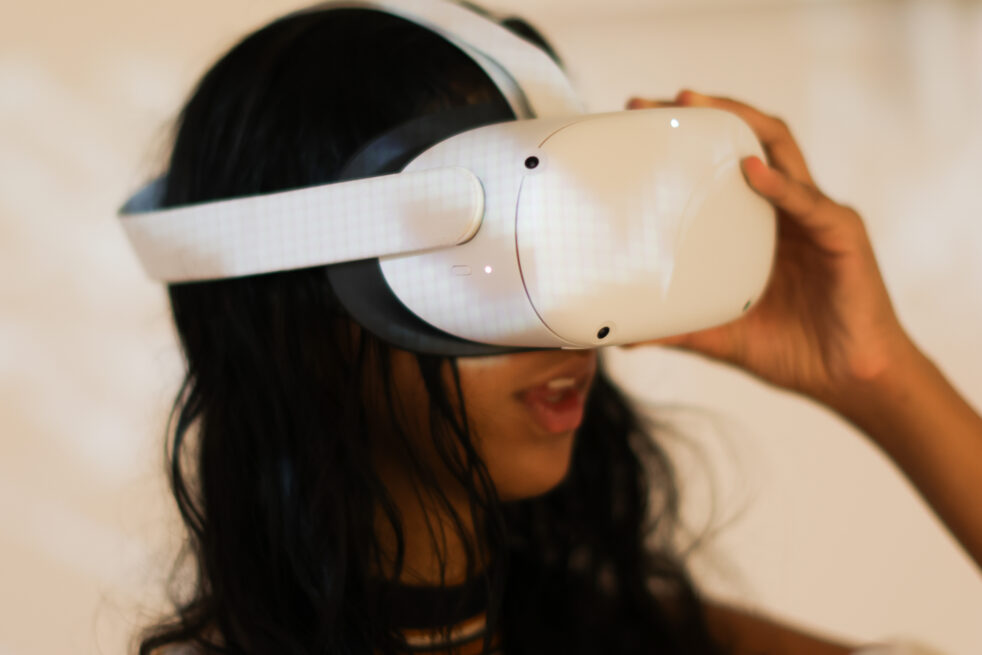With the purpose of curating an accessible art exhibit at the intersection of science and technology, Birney Robert, event coordinator for Tech’s College of Computing, created the “Extension of Self” exhibit here at the Institute. The exhibit is being held from Aug. 15-Oct. 14 in the Price Gilbert Library Gallery every Wednesday through Friday from 9 a.m.-4 p.m. and by appointment.
Robert is the sole Principal Investigator of the Microsoft and C21U Accessibility Grant, as well as the curator of this exhibit and the second exhibit which will occur in 2023. She applied for this grant alongside her thesis research in the fall of 2021.
The mission behind the exhibit is to show viewers what it means to be human in a digital world. Robert was inspired by a quote she read in Sherry Turkle’s book, “Evocative Objects: Things We Think With.”
Turkle’s character says, “She feels so close to her laptop that she cannot tell where it leaves off and she begins. Her self-understanding depends on analyzing the flows and rhythms that pass between herself and the machine.”
This quote sparked inspiration. “Reading this quote, I thought about cell phones and how they are an extension of our minds. Cell phones hold phone numbers, photos, appointments, messages, GPS and all sorts of information and memories. There are great innovations in digital technology that enhance our life and well-being, as well as great harms,” Robert said.
The “Extension of Self” exhibit showcases six artists working at the innovative intersection of art, science, technology and accessibility.
Four of the artists are Atlanta-based: Chanell Angeli, Eve Brown, Emma Chammah and Bojana Ginn. Two of the artists are Tech professors: Ashutosh Dhekne and Noura Howell.
“This exhibit explores themes of communication, our bodies, the environment and data collection, all in relation to our identity. Our identities are complex and full of multiplicities, which this exhibit showcases, while bringing attention to our complexities, the chaos of existence and the ever fluid state of being,” Robert said.
“We cannot be reduced to data collected from our search history, biosensing wearables or social media. We cannot be flattened by these two-dimensional spaces.”
When creating the exhibit, Robert asked questions such as “How do we communicate our identities within school, home, work and public places, such as social media? How can we live in harmony with the virtual and natural world? How can we slow down and care for ourselves, our ancestors and the environment in today’s digital world? How can we address accessibility through art and tech?”
It was Robert’s goal to make the exhibit both accessible and unique. Art tends to be visually dominant and roped off. This exhibit goes beyond what the eyes can see. All six installations are interactive and provide a more accessible experience viewers.
“The artwork comes alive when you interact with it. The visitor is as much a part of the art exhibit as the art itself,” Robert said.
The exhibit lowers the barrier to entry within the arts, science and technology through its focus on accessibility. It cultivates community and inspires conversations and interactions at Tech and in Atlanta. It has allowed for growth in our local community and new ideas about the values behind the exhibit.
At a STEM-dominated school, Robert hopes to demystify conceptual art to a scientific community.
Through her vision and the artwork of others, she has created an exhibit that is accessible to all and will spark new conversations about what it means to be human in a digital world.
For more information about events around the Institute and the exhibit, please visit art.c21u.gatech.edu.
